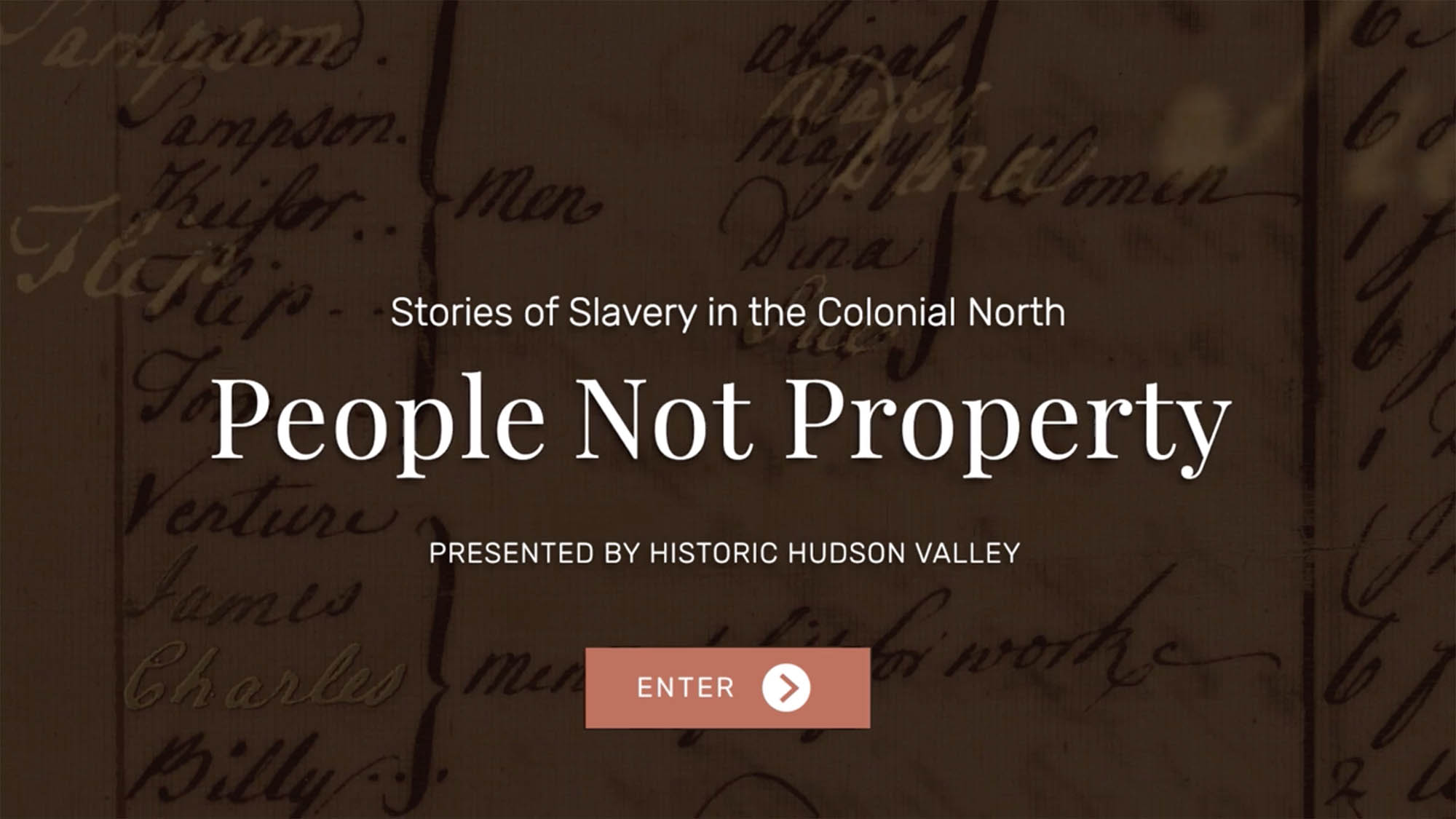People Not Property: Stories of Slavery in the Colonial North is a rich resource for students of many grade levels. The website focuses on the story of slavery in the North, separate from the more familiar history of antebellum Southern slavery. It highlights the stories of enslaved people, exploring history through personal stories.
People Not Property is divided into four broad topics:
Defining Slavery traces how white Europeans introduced slavery to the northern colonies and used laws to entrench slavery systematically in the colonies.
Being Enslaved explores the lives of enslaved individuals, particularly through family relationships, as well as the knowledge and skills enslaved people possessed.
Choosing Resistance considers various courses of action that enslaved people took—individually and collectively—to respond to captivity, as well as the potential consequences.
Pursuing Justice traces the gradual ending of slavery and the legacy of slavery today.
While these sections build on each other, the website may be viewed in any order. Many interactive features are designed to stand on their own, allowing them to be easily integrated into a classroom lesson.
Features include live action videos, animation, questionnaires, annotated primary documents, and storybooks that combine both images and text. Transcripts of all videos are available by request.
The TimeMap charts slavery’s rise, growth, and gradual decline in the Northern colonies, and indicates historical milestones. It includes links to the website’s featured content.
Additional resources include a Sitemap, Glossary, Bibliography, and Related Links.
People Not Property is divided into four broad topics:
Defining Slavery traces how white Europeans introduced slavery to the northern colonies and used laws to entrench slavery systematically in the colonies.
Being Enslaved explores the lives of enslaved individuals, particularly through family relationships, as well as the knowledge and skills enslaved people possessed.
Choosing Resistance considers various courses of action that enslaved people took—individually and collectively—to respond to captivity, as well as the potential consequences.
Pursuing Justice traces the gradual ending of slavery and the legacy of slavery today.
While these sections build on each other, the website may be viewed in any order. Many interactive features are designed to stand on their own, allowing them to be easily integrated into a classroom lesson.
Features include live action videos, animation, questionnaires, annotated primary documents, and storybooks that combine both images and text. Transcripts of all videos are available by request.
The TimeMap charts slavery’s rise, growth, and gradual decline in the Northern colonies, and indicates historical milestones. It includes links to the website’s featured content.
Additional resources include a Sitemap, Glossary, Bibliography, and Related Links.


